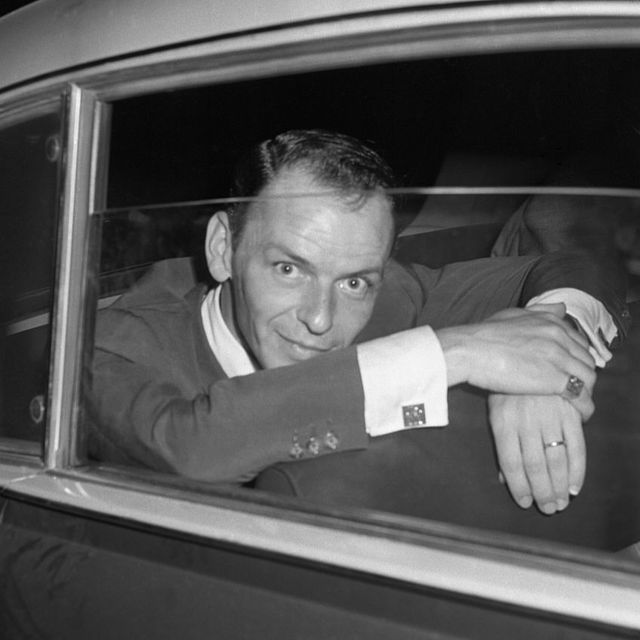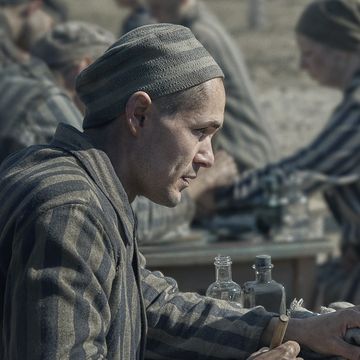Martin Scorsese, Leo DiCaprio, Frank Sinatra. There’s a pleasing kind of inevitability about it isn’t there? The old Marty-Leo axis back together again, a New York icon – albeit one from New Jersey – with links to the criminal underworld, a mid-century titan of American life who made it big, took a hit, and then got back on top again. It’s the great obsessions of one of the great filmmakers all coming together: Raging Bull with sweet pipes, The Aviator who flies to the moon.
But we’re getting ahead of ourselves – There have been wranglings going on for years.. Tina Sinatra, who is Frank’s daughter and runs his estate, has yet to give the thumbs-up. His eldest daughter, Nancy Sinatra, seemed to disapprove of the idea on X (formerly Twitter):
“Certain things are very difficult for a family, and I totally understand,” Scorsese said in 2016. “But, if they expect me to be doing it, they can’t hold back certain things. The problem is that the man was so complex. Everybody is so complex – but Sinatra in particular.”
So with the caveat that this might end up being snarled up further: it feels like an obvious Scorsese joint, but what kind of a Scorsese joint are we looking at here?
There are some clues. Jennifer Lawrence has reportedly been cast as Sinatra’s second wife Ava Gardner, who married him in 1951 and divorced him in 1957. If that’s the rough span of the film, it’s a particularly fertile and fascinating part of Sinatra’s life.
In Gay Talese’s seminal Esquire profile ‘Frank Sinatra Has a Cold’, Talese wrote that Sinatra had had to fight to get back to his position at the peak of American popular culture.
“In an age when the very young seem to be taking over, protesting and picketing and demanding change, Frank Sinatra survives as a national phenomenon, one of the few prewar products to withstand the test of time,” Talese wrote. “He is the champ who made the big comeback, the man who had everything, lost it, then got it back, letting nothing stand in his way, doing what few men can do: he uprooted his life, left his family, broke with everything that was familiar, learning in the process that one way to hold a woman is not to hold her.”
Talese is referring partly to Sinatra’s fall from the days when he had inspired Sinatramania – and revealed that teenagers, especially girls, were a huge record-buying market – and inspired a near-riot at the Paramount Theatre in New York. Sinatra later said the reason for the outpouring of excitement was “perfectly simple”.
“It was the war years and there was a great loneliness, and I was the boy in every corner drugstore, the boy who'd gone off drafted to the war. That's all.”
In 1943 he was exempted from military service because of a perforated eardrum he had endured since birth. (Or at least that was the official version of the story. Army files recorded that he was psychologically unsuitable, and that the eardrum reasoning was put out to avoid “undue unpleasantness for both the selectee and the induction service”.) One columnist alleged – untruthfully, as it turned out – that Sinatra had bought his way out of military service with $40,000. Still, he was huge: earning $93,000 a week and selling 10 million records a year.
However, by 1951 things were changing. One of the difficulties which may be holding up the whole Scorsese production is the fact that he might intend to delve into how Gardner and Sinatra began an affair while Sinatra was married to Nancy Barbato, who was Tina Sinatra’s mother. That was one of the big hits to Sinatra’s image and popularity in the early Fifties, along with his alleged mafia connections becoming more well known. With sales down and money drying up, Sinatra had to borrow $200,000 from his record label to pay off back taxes.
He wasn’t making movies anymore either, and found solace in Las Vegas as one of the first artists to do long, glitzy hotel residencies from November 1951. He remained at a low ebb, often performing to a half-empty theatre. But when he starred in From Here to Eternity in 1953 with Burt Lancaster, Montgomery Clift and Donna Reed, things started to turn around. Sinatra launched himself back into his work, hooking up with Nat King Cole’s arranger Nelson Riddle and finding his mojo again. After listening to the master of ‘I’ve Got the World on a String’, he reportedly announced: “I'm back, baby, I'm back!”
His run of albums from there – Songs for Swinging Lovers, In the Wee Small Hours, Close to You, A Swinging Affair, Where Are You? – are the golden Sinatra period and put him so firmly back on top that he was invited to be the MC at a lunch for Soviet premier Nikita Krushchev in 1959.
That feels like the right sort of era for 49-year-old DiCaprio to play Sinatra in, and pulls together a lot of themes which Scorsese has been tugging at throughout his career: the self-made man trying to protect his position at the top; the obsessive who can’t stop reaching for something only they can grasp; the bruised underbelly of the American Dream; and a good dollop of Catholicism on top of it all. If it comes off, it could be great. But only if Scorsese gets to do it his way.














